Madurai Iconic Attractions
Madurai Iconic Attractions
Gandhi museum-placed in the old palace of Rani Mangammal
Ayiram kaal mandapam-house of 1000 pillars
- includes
- excludes
Things to do in and around madurai
How to reach madurai?
We've established convenient pickup and drop options right in your vicinity. Simply download the app, book your package using your location, and inform us of your exact whereabouts. Additionally, we've outlined various routes to reach the destination, taking into account commonly used traffic patterns.
- Nagercoil
Additional Information about Madurai Iconic Attractions
Madurai Iconic Attractions For enquiries
If you are looking to know more information about Madurai Iconic Attractions, our team at madurai will assist you personally through the below dedicated number
Madurai Iconic Attractions address
Madurai Iconic Attractions,
madurai,
tamilnadu
Whatsplan's Madurai Iconic Attractions contact number : +91 9842067265
Places covered in(6)
Pazhamudircholaimadurai, tamilnadu
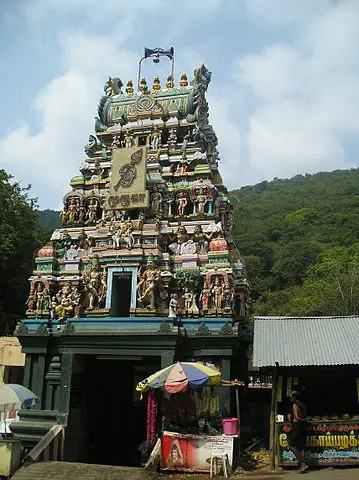
Pazhamudircholai Murugan Temple is a Hindu temple, located about 25 kilometres north of Madurai, India atop a hill covered with dense forests. One of the six important abodes (Arupadaiveedu) of Lord Muruga, it is close to the Vishnu temple of Azhagar Kovil. It is said that the Azhagar Kovil was the actual temple for the main deity of the temple, and the deity was later shifted or relocated to Pazhamudircholai during Thirumalai Nayak's rule in Madurai. One can reach Pazhamudircholai by car, van, two-wheeler or bus. From Madurai one can catch the bus on route number 44 to reach it. There is a bus shuttle every 20 minutes from the foot of the hill to the Temple. It takes approximately 15 minutes (3.4 km) to reach the temple. Pazhamudircholai is a fertile hill, blessed with nature's bounty in the form of innumerable fruits, vegetables and natural springs. It is a dense forest where Valli is supposed to have lived. The temple itself is relatively small with Valli, Deivayanai, and Lord Muruga in a separate shrine. Lord Ganesha is also present in a separate shrine. There is a Temple Tower and monkeys play around the area. There is another small temple above Pazhamudhir Cholai where local tribes lead their lives. Among the Arupadaiveedu, Pazhamudircholai is the last. Lord Muruga at Pazhamudircholai is praised in several works of old Tamil literature such as the Silappathikaram, the Ettuthokai and the Pattupattu.
Thirupparamkunrammadurai, tamilnadu
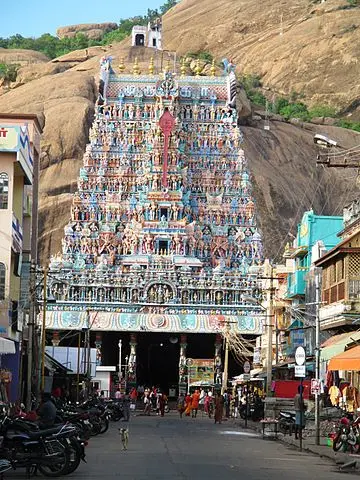
Tirupparaṅkuṉṟam is a new town in Madurai district(created in 2011) in Tamil Nadu, India. The area is part of Madurai Municipal Corporation and the first local body election for the corporation was held on 18 October 2011. Tirupparaṅkuṉṟam is known for the Thirupparamkunram Murugan temple, which is one of the Six Abodes of Murugan. It is one of the most visited tourist places in Madurai, next only to the Meenakshi Amman Temple. The Tirupparankunram Dargah is located atop the Tirupparankunram Hill. As of 2011, the town had a population of 48,810.
Meenakshi Templemadurai, tamilnadu
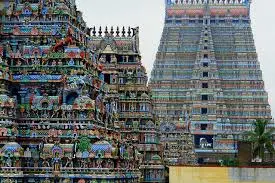
The Meenakshi Amman Temple is a historic and renowned Hindu temple located in the city of Madurai, Tamil Nadu, India. Dedicated to Goddess Meenakshi (a form of Parvati) and her consort Lord Sundareswarar (a form of Shiva), the temple is a significant pilgrimage site and a masterpiece of Dravidian architecture. The Meenakshi Temple is a classic example of Dravidian architecture, characterized by its towering gopurams (entrance towers), intricately carved sculptures, and vibrant paintings. The temple complex is vast and covers an area of around 14 acres. The temple is known for its towering gopurams, with the highest one standing at approximately 52 meters. These gopurams are adorned with elaborate sculptures and intricate carvings depicting various mythological stories. The main sanctum of the temple is dedicated to Goddess Meenakshi, and another sanctum nearby is dedicated to Lord Sundareswarar. The deities are adorned with elaborate jewelry and decorations during festivals. The "Aayiram Kaal Mandapam" or Hall of Thousand Pillars is a striking feature of the temple. The hall is adorned with numerous carved pillars, each with intricate details. It serves as a venue for cultural events and ceremonies. This area within the temple complex serves as a shopping arcade and is known for its sculpted pillars. The temple complex includes a sacred tank called "Porthamarai Kulam" or the Golden Lotus Pond. Devotees often take a ceremonial dip in this tank. The Meenakshi Temple hosts several festivals throughout the year, with the "Meenakshi Thirukalyanam" (the divine marriage of Meenakshi and Sundareswarar) being one of the most significant celebrations. The temple is not only a place of worship but also a center for art, culture, and Tamil literature. It has played a crucial role in the development and preservation of South Indian art and architecture. The temple is open to devotees and visitors. It's advisable to check the temple's schedule, especially during festivals, and adhere to any specific guidelines for visitors. The Meenakshi Amman Temple is not only a spiritual hub but also a cultural and architectural marvel, drawing visitors from around the world. Its rich history, stunning architecture, and religious significance make it a must-visit destination for those exploring the cultural heritage of Tamil Nadu.
Thirumalai Nayakkar Mahalmadurai, tamilnadu
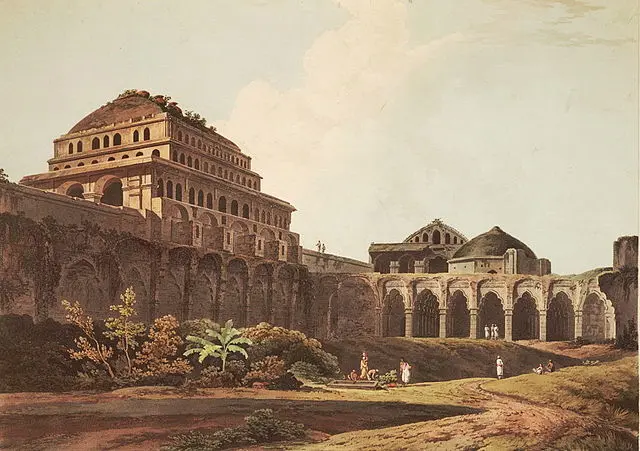
Thirumalai Nayakkar Mahal is situated in the heart of Madurai, near the Meenakshi Amman Temple. Its central location makes it easily accessible to visitors exploring the city. The palace is a classic example of Indo-Saracenic architecture, which is a blend of Indian and Islamic styles. It features grand arches, domes, and intricate carvings. Thirumalai Nayak, a king of the Nayak dynasty, commissioned the construction of the palace in the 17th century. The palace was built by the Italian architect, Silapathikara Perumal Chiari. Thirumalai Nayakkar Mahal was built as a residential palace for King Thirumalai Nayak and also served as a venue for important functions and royal ceremonies. The palace originally had two main sections – Swarga Vilasam (Celestial Pavilion) and Ranga Vilasam (Stage Pavilion). The Swarga Vilasam was the royal residence, while the Ranga Vilasam was used for conducting cultural events and festivals. The palace features a spacious courtyard with impressive pillars and arches. The courtyard was once the main venue for various royal events and gatherings.The Ranga Vilasam or the Dance Hall is one of the most significant parts of the palace. It was used for performances, including dance and music events. The palace is adorned with elaborate stucco work, depicting scenes from the Mahabharata and Ramayana, as well as images of various deities. Visitors can enjoy a light and sound show in the evenings, which narrates the history of the Nayak dynasty and the construction of the palace. The show adds a dramatic touch to the visit. Thirumalai Nayakkar Mahal is recognized as a national monument and is under the protection of the Archaeological Survey of India (ASI).
Gandhi Memorial Museum, Maduraimadurai, tamilnadu
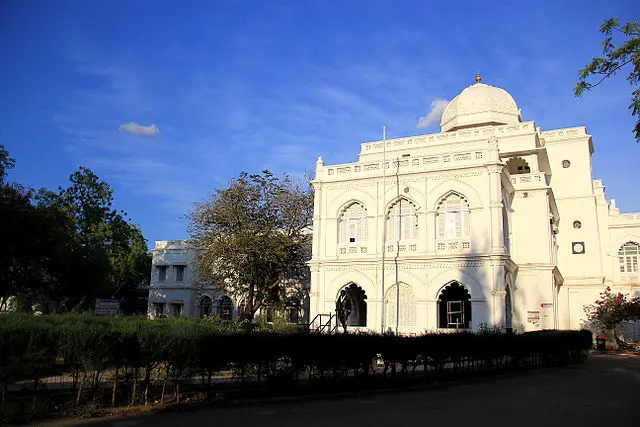
Gandhi Memorial Museum is a significant institution dedicated to Mahatma Gandhi, the father of the Indian nation. There are several Gandhi Memorial Museums in different parts of India. The most famous one is located in Madurai, Tamil Nadu. The Gandhi Memorial Museum in Madurai is situated in the city, near the Tamukkam Grounds. It is easily accessible and is a prominent landmark. The museum was established in 1959 to commemorate Mahatma Gandhi and his principles of non-violence, truth, and simplicity. It is one of the five Gandhi Sanghralayas (Gandhi Museums) in India.The museum houses a vast collection of exhibits related to Mahatma Gandhi's life, including photographs, letters, and personal belongings. It also showcases the history of India's struggle for independence.One of the highlights of the museum is the bloodstained garment worn by Gandhi at the time of his assassination in 1948. This relic is preserved in a glass case and is a poignant reminder of his sacrifice for the nation. The museum features dioramas that depict various phases of Mahatma Gandhi's life, from his early years to the struggle for independence.There is a library within the museum premises that houses a collection of books, manuscripts, and periodicals related to Mahatma Gandhi and the Indian independence movement.
Alagar Koyilmadurai, tamilnadu
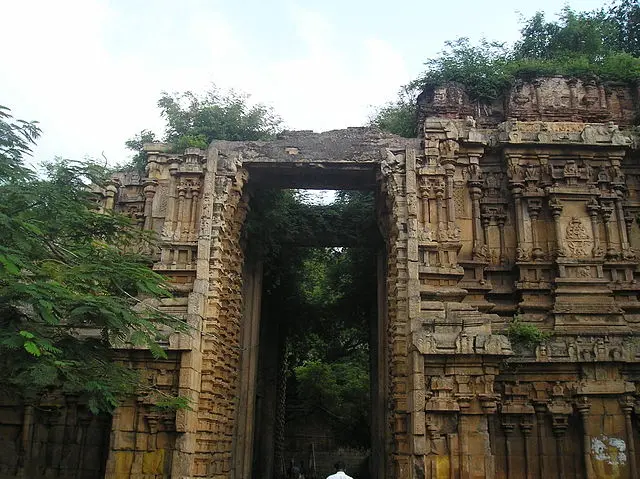
The Alagar Kovil, also known as Alagar Temple or Alagar Koyil, is a significant temple dedicated to Lord Vishnu located in the Alagar Hills near Madurai, Tamil Nadu, India. Alagar Kovil is situated approximately 21 kilometers northeast of Madurai, amidst the picturesque Alagar Hills. The temple is surrounded by lush greenery and provides a serene and spiritual atmosphere. The primary deity of the temple is Lord Alagar, also known as Kallazhagar or Alagar, who is an incarnation of Lord Vishnu. The presiding deity is in a standing posture and is believed to be a manifestation of divine grace. One of the most famous festivals associated with Alagar Kovil is the "Chithirai Thiruvizha" or the Chithirai Festival. It is a grand annual celebration that takes place in the Tamil month of Chithirai (April-May). During this festival, a procession is carried out in which the deity Lord Alagar travels from Alagar Kovil to Madurai to participate in the celestial wedding of Goddess Meenakshi and Lord Sundareswarar.The temple showcases Dravidian architecture with intricately carved sculptures and pillars. The gopurams (towers) of the temple are adorned with colorful sculptures depicting various episodes from Hindu mythology.Alagar Kovil is part of the Pancha Sthala Temples dedicated to Lord Vishnu. The other four temples in this group are Srirangam, Kanchipuram, Tirupati, and Parakala Mutt.Apart from its religious significance, Alagar Kovil is known for its natural beauty, especially the surrounding hills and the Alagar tank.